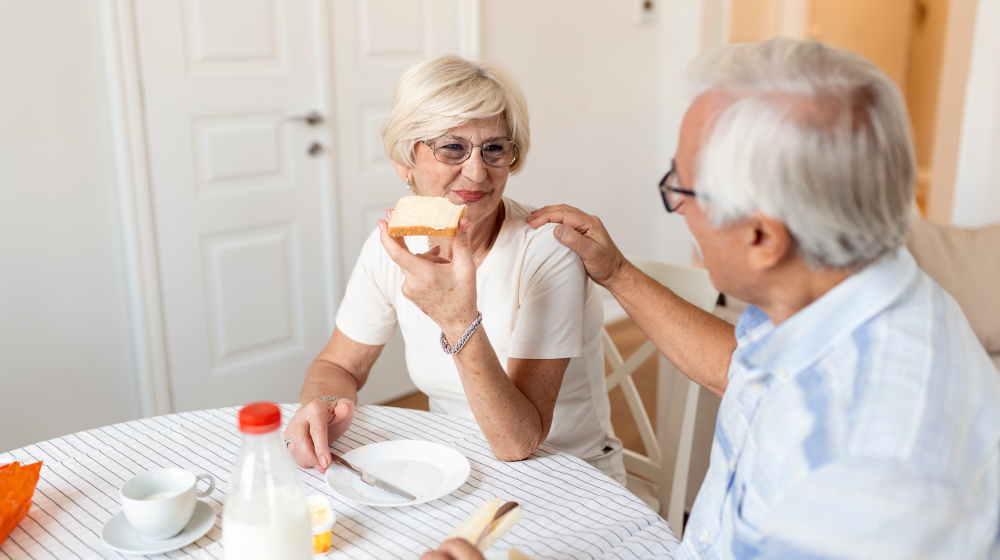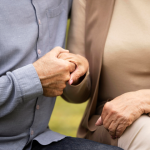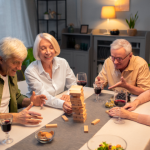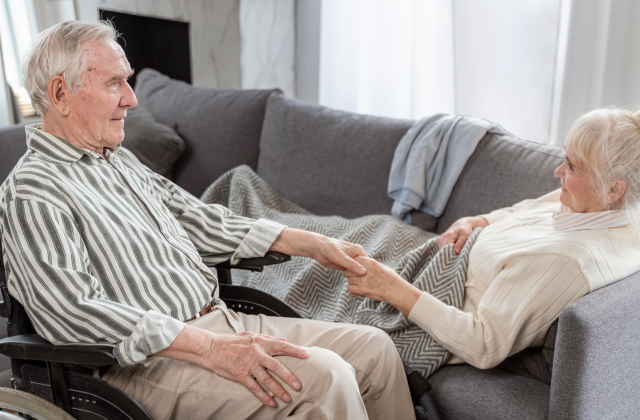What is the NYIA Assessment Request Form 05/22?
Perhaps in the entire context of New York’s healthcare system, there are few documents that mean more to families who need home care than the NYIA Assessment Request Form 05/22. NYIA = New York Independent Assessor, which established a program to determine if a person qualifies for Medicaid funded home care services – including CDPAP (Consumer Directed Personal Assistance Program).
More simplistically, the form serves as the link between a person’s medical needs/condition and when they have been approved to get that help at home. Without it, families could be left waiting longer for that assistance to take care of their loved one.
“Think of the NYIA Assessment as the skeleton key that gives access to home professional help – seniors, disabled persons, and those unable to live independently.”
Why does the form exist?
The NYIA Assessment Request form is not simply another bureaucratic requirement – it is a foundation of evaluability. The ultimate objectives of the form are:
- Establish Eligibility – Establish the eligibility of the applicant applying for Medicaid home care programs.
- Evaluate Medical Needs – Evaluate the persons physical and cognitive status.
- Pinpoint Services – Confirm the type and degree of patient services aligns directly with medical health care needs.
In highly complex metropolitan regions like New York, where thousands of families need home care to be at home utilizing state regulated home care, the form provides focus and order.

Who is Required to Submit the NYIA Assessment Request?
The form is pertinent for:
- Seniors who wish to remain in their home rather than a nursing home.
- Adults with disabilities who need regular assistance, such as bathing, dressing or feeding themselves.
- Family caregivers applying for programs like CDPAP, for compensation for caring for their family.
- New Medicaid applicants needing long-term home care services.
How Does the Process Work?
The process can feel overwhelming, but once we break it down, it helps to see the process less complicated:
Step 1 – Submit the NYIA Assessment Request Form 05/22, keep in mind, please fill out both the personal info of the person that requires assessment, but also the medical info of the person needing assessment.
Step 2 – The New York Independent Assessor will schedule an evaluation, which will include a home visit.
Step 3 – You will either be approved or denied to have access to the Medicaid funded home care services.
Step 4 – If approved, a care plan will be developed, including the appropriate services provided to match and individual’s care plan.
Common Problems Families Encounter
Although the process is intended to be simple, many families encounter problems like:
- A long wait to get your assessment scheduled.
- Confusion regarding all the information required.
- Difficulty receiving the medical information required.
This is why agencies like Angel Care Inc. NY are here to help — we take clients through the process each step along the way until we get everything down so no one misses any of the details.
Why Choose Angel Care Inc. NY?
NYIA can be overwhelming alone. Angel Care Inc. NY is there for you; we provide support:
- Our in-depth knowledge of the entire assessment process.
- Helping fill out forms and documentation needed.
- Safety and advocacy for you until you get the care you need.
“To us, it is not about the service; it is about dignity. Everyone has the right to live independently in their own home in peace and dignity.”
Concluding Remarks
The NYIA Assessment Request Form 05/22 is more than a document — it is a lifeline. For families in New York, the first process of kindness, professional, and affordable home care is your document, NYIA Assessment Request Form 05/22 (look it up online here).
If you or a loved one are considering an application, please remember: you are not alone. Angel Care Inc. NY will be right there alongside you every step of the way.

When home life starts to feel fragile—missed pills, uncertain balance, meals skipped not from choice but from effort—what’s needed is not “more help” in the abstract but a coherent plan. That plan is geriatric care: an integrated way of organizing medical guidance, daily routines, and home safety so that an older adult can keep living well, at home, on their own terms. “Good geriatric care is choreography, not chaos: the right people, doing the right things, at the right cadence.” Plain Definition (in one minute) Geriatric care coordinates health, function, and safety for adults typically 65+ (earlier if conditions warrant). It blends clinical oversight (physicians, nurses, therapists) with home supports—especially Home Health Aides NY (HHA) and Personal Care Aides (PCA)—to maintain autonomy, reduce avoidable emergencies, and preserve quality of life at home. Who Truly Benefits (Signals You Can Spot Early) Use this quick scan. One “yes” is a nudge; two or more suggest it’s time to structure care. What you’re seeing Why it matters What usually helps first Repeated stumbles, “near-falls,” furniture-walking Hidden balance/strength issues; home hazards PT/OT home eval; HHA for safe transfers; simple home modifications Piles of pills, missed doses, duplicate meds Medication safety risk RN med reconciliation; weekly pill set-up; HHA reminders & set-up New forgetfulness, wandering, day/night reversal Cognitive/supervision gap Dementia-capable routines; HHA cueing; caregiver coaching Weight loss, low appetite, dehydration Nutrition risk Dietitian input; HHA meal prep & hydration prompts ER visits for preventable issues Unstable control at home Geriatrician review; clearer plan; in-home monitoring & follow-through “If the problem shows up at home, the solution should show up at home too.” Who Does What at Home: Roles Without Guesswork Role Primary aim They typically do They don’t do Geriatrician / PCP Clinical strategy Diagnose, adjust meds, coordinate referrals Extended household tasks Nurse (RN/LPN) Clinical follow-through Wound care, injections, education, monitoring Long blocks of non-clinical chores Therapies (PT/OT/SLP) Function & safety Gait/balance, transfers, home setup, swallowing Change medications Home Health Aide (HHA) Hands-on personal care with basic health support under RN plan Bathing, dressing, safe transfers, diet-aligned meal prep, hydration & med reminders, observation & reporting Invasive procedures; independent clinical decisions Personal Care Aide (PCA) Non-medical ADL/IADL help Hygiene assist, light housekeeping, errands, companionship Health-related tasks needing RN oversight Care Manager Navigation & logistics Scheduling, benefits, resources, caregiver support Clinical treatment Scopes vary by payer rules and agency policies; confirm what’s authorized in your plan. Care Formats: Picking the Right Intensity (and Cost Logic) Format Billing unit Best fit Why families choose it Hourly HHA (shifts) Hourly Morning/evening peaks; active nights Precision—pay for hours that matter most Live-in HHA Daily rate Predictable days; intermittent night needs Continuity—one familiar aide, fewer handoffs Split shifts Hourly (AM/PM) “Get-up / settle-in” routines Efficient for clustered ADLs Skilled visits (RN/PT/OT) Per visit Wounds, new meds, mobility retraining Targeted expertise; time-limited Respite blocks Hour/Day Caregiver recovery time Prevents burnout; keeps everyone safe Rates differ by borough, shift pattern, and acuity. Ask for a written estimate linked to your exact plan of care. Safety & Quality: The Non-Negotiables Falls are engineered out: cleared pathways, non-slip surfaces, practiced transfer techniques, sensible footwear. Medication is exact: reminders mirror the current physician list; discrepancies escalated to the RN. Skin stays intact: high-risk areas checked; repositioning and skincare routines are consistent. Fuel & fluids: simple, preferred meals; hydration in sight; weight and energy trends tracked. Early-warning culture: new cough, fever, swelling, confusion, pain, appetite/sleep change → document & report promptly. Coverage & Access in New York (2025) Medicare: time-limited home health when skilled criteria are met. Medicaid / MLTC: long-term in-home support for eligible members; often includes Home Health Aides NY. Private pay & LTC insurance: flexible intensity and scheduling; check policy language. Community add-ons: caregiver training, respite programs, dementia support groups. Policies evolve; request a written benefits check for your specific situation. How Angel Care Inc. NY Puts It All Together Orientation call (no pressure): goals, history, preferences, languages, risks. RN in-home assessment: reconcile meds, map risks, align routines. Right-fit staffing: skills + temperament + language; meet & greet before start. Measured launch (first 2–4 weeks): we fine-tune based on what actually happens at home. Continuous oversight: RN check-ins (in person or telehealth), family updates, rapid coverage if an aide is out, and tracked outcomes (falls, hospitalizations, satisfaction). “Care that protects dignity and pays off in fewer crises—that’s the standard we hold ourselves to.” FAQs (New York • 2025) Is geriatric care only for 65+? Mostly—but start earlier if chronic illness, cognitive change, or disability creates geriatric-type needs. Do we need a doctor’s order to add HHAs? For insurance-funded plans, typically yes under clinician oversight. Private pay can begin after assessment and safety review. HHA or PCA—how do we decide? Need hands-on personal care with health-related oversight? Start with HHA. If it’s mainly household help and companionship, PCA may fit. How many hours should we start with? Cover high-risk moments (mornings/evenings, bathing, transfers). Adjust up or down after a week of observation. Can we request a different aide? Yes. We manage transitions carefully to maintain comfort and continuity. First-72-Hours Action Card (print & stick on the fridge) List current meds (with doses) + physician contact. Remove trip hazards; add night lighting to hallway/bath. Set meal & hydration prompts; prep three easy go-to meals. Schedule morning/evening HHA coverage for bathing/transfers. Share escalation rules: who to call for urgent vs routine changes.

💡 "The senior clubs outlined in this article are independent organizations. Angel Care Inc. NY provides home care services and provides this information for families searching for service in Brooklyn." In the constant ebb and flow of Brooklyn, many older adults and their family members are searching for not just tangible medical resources, but a place where community, friendship, and energy collide. Senior clubs in Brooklyn are just that – a safe, active, environment where older adults can share, connect socially in creative ways, and find enjoyment in their daily lives. “A senior club is not just a room with chairs and activities on a schedule; it is a refuge where experience meets friendship, and where aging is cherished instead of merely tolerated.” Why Are Clubs for Seniors so Important? The greatest advantage of a senior club is their capacity to address the whole spectrum of human needs – social, emotional, intellectual, and physical. These centers are: Social connectors – Decreasing isolation through authentic friendships. Learning places – Offering tech, health, and arts workshops. Wellness havens - Promoting movement through chair yoga, tai chi, and mild aerobics. Community liaisons - Connecting families to local agencies, home care services, and advocacy. For many seniors who live alone, these clubs are more than a schedule of activities. They become an adjunct home. Types of Activities at Brooklyn Senior Centers The range of activities is equally remarkable, reflecting the multi-cultural essence of Brooklyn: Arts & Creativity: Members of all different disciplines, from visual arts to knitting, engage their creative side. Cultural Celebrations: Festivals that honor Caribbean, Russian, Italian, Jewish, and countless other customs and traditions. Health & Physical Activity: Tai chi, dance, or breathing with awareness for physical balance and resilience. Technology Training Classes: Lessons related to smart phones, video chatting, staying safe online. Community Outings: Trips to museums, concerts, and theaters as a group. Not only do these activities offer diversion, they enhance cognitive health, increase mobility, and provide renewed purpose. Your Older Adult Senior Centers offer a chance to get healthy, keep active, and engage your brain. Who Benefits the Most? Senior Centers are available to all residents aged 60 and over, yet, the following groups benefit most: Newly retired individuals who are learning to adjust to a new lifestyle. At risk seniors with chronic conditions that want to stay active. Independent older adults that want social interaction. Family caregivers that need respite and peace of mind. A Distinctive Advantage of Brooklyn: Real Places to Go to Unlike cities, Brooklyn has a wide and diverse network of senior centers. Each neighborhood has senior centers, so that seniors can consistently find folks who speak their language, practice their culture, and enjoy their group of friends. Grant Square Neighborhood Senior Center (Fort Greene Council) 19 Rogers Avenue, Brooklyn, NY 11216 →Meals, fitness, arts, and more. Park Slope Center for Successful Aging. Park Slope Center for Successful Aging Provides older adults with lectures, fitness, cultural activities and social hours. Bay Ridge Center for Older Adults 15 Bay Ridge Avenue, Brooklyn, NY 11220 → Provides wellness classes, tech support and meals. Scheuer House Older Adult Center (Coney Island, JASA) 3601 Surf Avenue, Brooklyn, NY → Offers multilingual activities and support to coastal communities. Fort Hamilton Senior Recreation Center Fort Hamilton Senior Recreation Center 9941 Fort Hamilton Parkway, Brooklyn, NY 11209 → Very large recreational site, with fitness and community programs. “In Brooklyn, a senior can walk into a club and hear the familiar notes of their mother tongue — and in that instant, feel at home again.” These are but a few examples — throughout the borough, there are dozens of neighborhood centers that provide this kind of targeted support. How Senior Clubs and Home Care Are Connected Senior clubs offer enrichment and companionship opportunities, while many older adults also want to make sure they have individualized care at home. Enter Angel Care Inc. NY. For the clientele that we provide home care, senior clubs add one very important aspect — socialization. The combination of these two supports provide a balanced approach to how they live their lives — secure at home with assistance and with the stimulation of a group. Angel Care is family focused, and ensures that families do not have to choose between medical care and emotional wellness. Practical Take-Aways for Families If you are thinking about a senior club in Brooklyn for a loved one: Check location – Being nearby makes participation accessible. Go together to see a club – Attend an open house or take a trial class. Check with home care – Work out club schedules and aide visits. Ask about tailored programs – Some clubs will facilitate dementia-friendly groups or caregiver groups. Final Thoughts Over time a senior club in Brooklyn is more than a place in the community — it is a lifeline. They embody the philosophy that growing older should come with dignity, delight and connection. They provide families with the reassurance that their loved ones remain engaged and important. At Angel Care Inc. NY, we believe it is important to meet the medical needs of older adults, and to support their entitlement to community life. Personalized home care combined with access to Brooklyn’s rich senior clubs allows families to take a bold step forward to pursue a broader sense of wellbeing.



